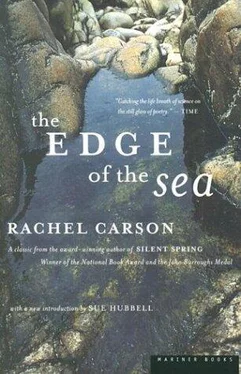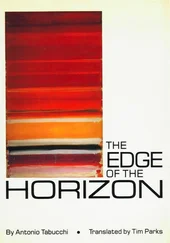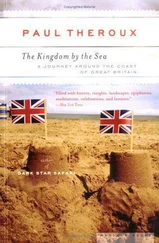In the sea urchins the tube feet are arranged in five avenues or rows running from upper to lower apexes of the body, just as the meridians on a globe run from pole to pole. The skeletal plates of the urchins are articulated rigidly to form a globular shell, or test. The only movable structures are the tube feet, which are thrust out through perforations in the test, the pedicellaria, and the spines, which are mounted on protuberances on the plates. The tube feet are retracted when the animal is out of water, but when submerged they may be extended beyond the spines to grasp the substratum or to capture prey. They may also perform some sensory functions. In the various species the spines differ greatly in length and thickness.
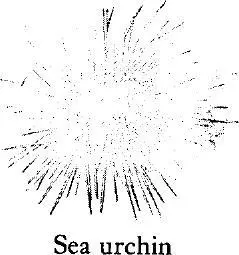
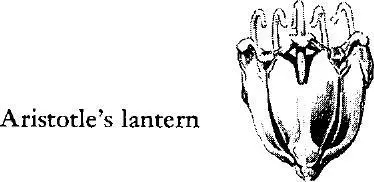
The mouth is on the under surface, surrounded by five white, shining teeth used to scrape vegetation off the rocks and also to assist in locomotion. (Although other invertebrates—e.g., the annelids—have biting jaws, the urchins are the first to have grinding or chewing organs.) The teeth are operated by an internally projecting apparatus of calcareous rods and muscles known to zoologists as Aristotle’s lantern. On the upper surface the digestive tract opens to the exterior through a centrally placed anal pore. Around this are five petal-shaped plates, each bearing a pore that serves to discharge eggs or sperm. The reproductive organs are arranged in five clusters just under the upper or dorsal surface. They are practically the only soft parts the animal possesses and it is for these that the sea urchins are sought as human food, especially in Mediterranean countries. Gulls hunt the urchins for a similar purpose, often dropping them on the rocks to break the tests so that they can eat out the soft parts.
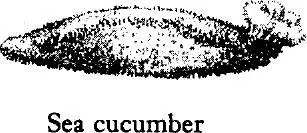
The eggs of the sea urchins have been used extensively in biological studies of the nature of the cell, and Jacques Loeb in 1899 used them in a historic demonstration of artificial parthenogenesis, causing an unfertilized egg to develop merely by treating it with chemicals or by mechanical stimulus.
The holothurians, or sea cucumbers, are curious echinoderms with soft, elongated bodies. They crawl on one surface with the mouth end foremost and so have secondarily substituted a functional bilateral symmetry for the radial symmetry characteristic of the phylum. Tube feet, where present, are confined to three rows on the functional under surface of the body. Some holothurians are burrowing forms, using small spicules embedded in the body surface to grasp the surrounding mud or sand and aid their progress. The shapes of these spicules vary with the species and often must be studied microscopically before correct identification can be made. The holothurians are large and abundant in tropical seas (they are the trepang, or beche-de-mer, of commerce) and in northern waters are represented by smaller species living on offshore bottoms or among intertidal rocks and seaweeds.
Mollusca: Clams, Snails, Squids, Chitons
BECAUSE OF their endlessly varied shells, often intricately made and beautifully adorned, some of the mollusks probably are better known than any other animals of the shore. As a group they possess qualities different from those of any other invertebrates, although their more primitive members and the nature of their larvae suggest that their remote ancestors may have resembled those of the flatworms. They have soft, unsegmented bodies typically protected by a hard shell. One of the most remarkable and characteristic molluscan structures is the mantle, a cloaklike tissue that encloses the body, secretes the shell, and is responsible for its complex structure and adornment.
The most familiar mollusks are the snail-like gastropods and the clamlike bivalves. The most primitive mollusks are the creeping, sluggish coat-of-mail shells, or chitons, the least known are the tusk shells, or scaphopods, and the most highly developed class the cephalopods, represented by the squids.
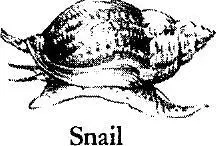
The shells of the gastropods are univalve or in one piece, and coiled in more or less spiral fashion. Nearly all snails are “right-handed,” that is, the opening is to the right as it faces the observer. One of the exceptions is the “left-handed conch,” one of the most common gastropods of Florida beaches. Occasionally a left-handed individual occurs in a normally right-handed species. Some gastropods have reduced the shell to an internal remnant, as in the sea hares, or have lost it entirely, as in the sea slugs or nudibranchs (in which, however, a coiled shell is present in the embryo).
The snails are for the most part active animals, both the vegetarians that move about scraping plant food from the rocks and the carnivores that capture and devour animal prey. The sedentary boat shells, or slipper shells, are exceptions; they attach themselves to shells or to the sea bottom and live on diatoms strained from the water, in the manner of oysters, clams, and other bivalves. Most snails glide about on a flattened muscular “foot,” or they may use this same organ to burrow into the sand. When disturbed, or at low tide, they draw back into their shells, the opening being closed by a calcareous or horny plate called the operculum. The shape and structure of the operculum vary greatly in the different species and sometimes it is useful in identification. In common with other mollusks (except the bivalves) the gastropods have a remarkable, tooth-studded band, the radula, on the floor of the pharynx, or, in some species, on the end of a long proboscis. The radula is used to scrape off vegetation or to drill holes in shelled prey.
The bivalves, with few exceptions, are sedentary. Some (e.g., the oyster) fix themselves permanently to a hard surface. Mussels and some others anchor themselves by secreting silklike byssus threads. The scallops and the lima clams are examples of the few bivalves that possess the ability to swim. The razor clams have a slender pointed foot by means of which they dig deeply and with incredible speed into the sand or mud.
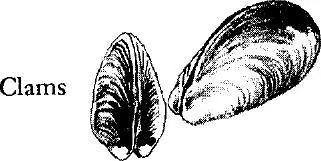
Bivalves that bury deeply in the substratum are able to do so because they possess a long breathing tube, or siphon, through which they draw in water and so receive oxygen and food. Although most are suspension feeders, filtering minute food organisms from the water, some, including the tellins and coquina clams, live on detritus that accumulates on the sea floor. There are no carnivorous bivalves.
The shells of gastropods and bivalves are secreted by the mantle. The basic chemical material of molluscan shells is calcium carbonate, which forms the outer layer of calcite, and the inner layer of aragonite, which is a heavier and harder substance although it has the same chemical composition. Calcium phosphate and magnesium carbonate also are contained in mollusk shells. The limy materials are laid down on an organic matrix of conchiolin, a substance chemically allied to chitin. The mantle contains pigment-forming cells as well as shell-secreting cells. The rhythm of activity of these two kinds of cells results in the marvelous sculpturing and color patterns of molluscan shells. Although shell formation is affected by many factors in the environment and in the physiology of the animal itself, the basic hereditary pattern is so strongly determined that each species of mollusk has its characteristic shell by which it may be identified.
Читать дальше
